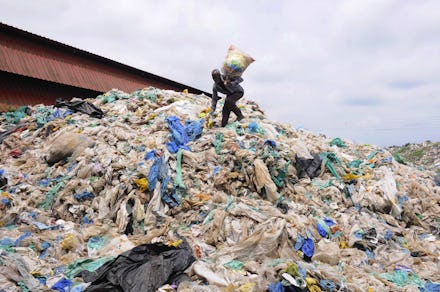Humans have created 9 billion tons of plastic in less than 70 years

Nine billion tons is one of those numbers that’s tricky to wrap a human brain around. It’s 45,000 blue whales or 3,370 of the heaviest thing the Guinness record crew has ever weighed or 24.5 Empire State Buildings.
The point is, it’s really very, very heavy.
But according to a new estimate published in the journal Science Advances, that’s how much plastic we’ve created since we started mass producing the ubiquitous group of compounds during the 1950s.
The team of environmental scientists was able to gather a family portrait — not just familiar faces like polystyrene, polyethylene and polyester fibers, but even coatings and other varieties that are less commonly tracked.
They also examined where those plastics were going, since that shapes how long the plastic remains in use — from the fleeting lifespans of packaging through textiles and electronics up to long-lived plastics used in construction.
So where has all that plastic gone? The scientists estimate we’re still using a little under a third of all plastic ever made. Almost two-thirds we’ve thrown out — either to a landfill or into the natural world around us. The rest has either been recycled (but remember, that’s just delaying its death) or burned (which can produce toxic air pollution).
The plastic flood won’t end any time soon. The scientists projected plastic production and recycling trends out to 2050. By then, just a century after we figured out how to mass produce it, they think we’ll have created more than 37 billion tons of plastic total. That would mean producing three times what we’ve made in the past 65 or so years in just the next 33 years.
It’s not going to magically disappear: If we hit that level of plastic production, the new analysis estimates we’ll discard more than 13 billion tons into landfills and the world around us.